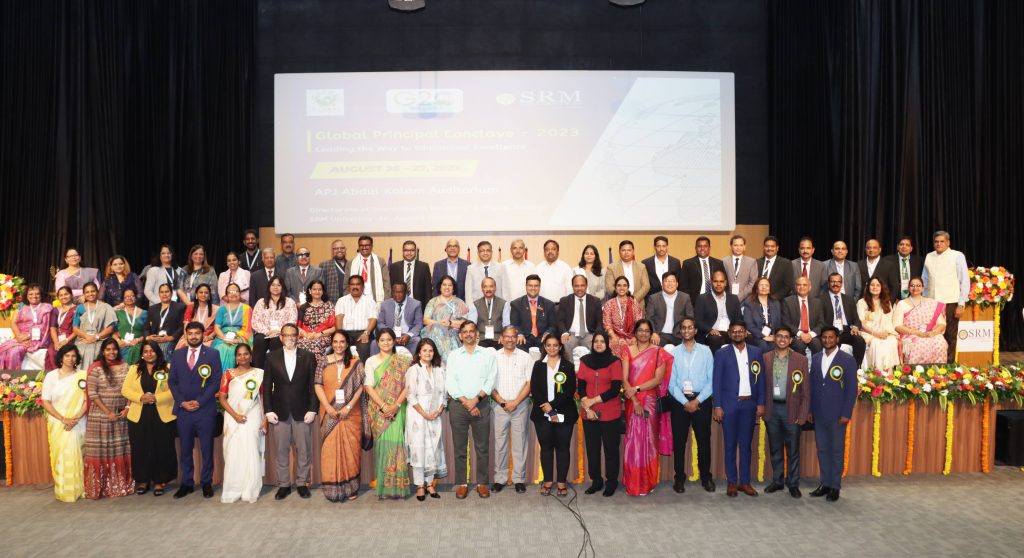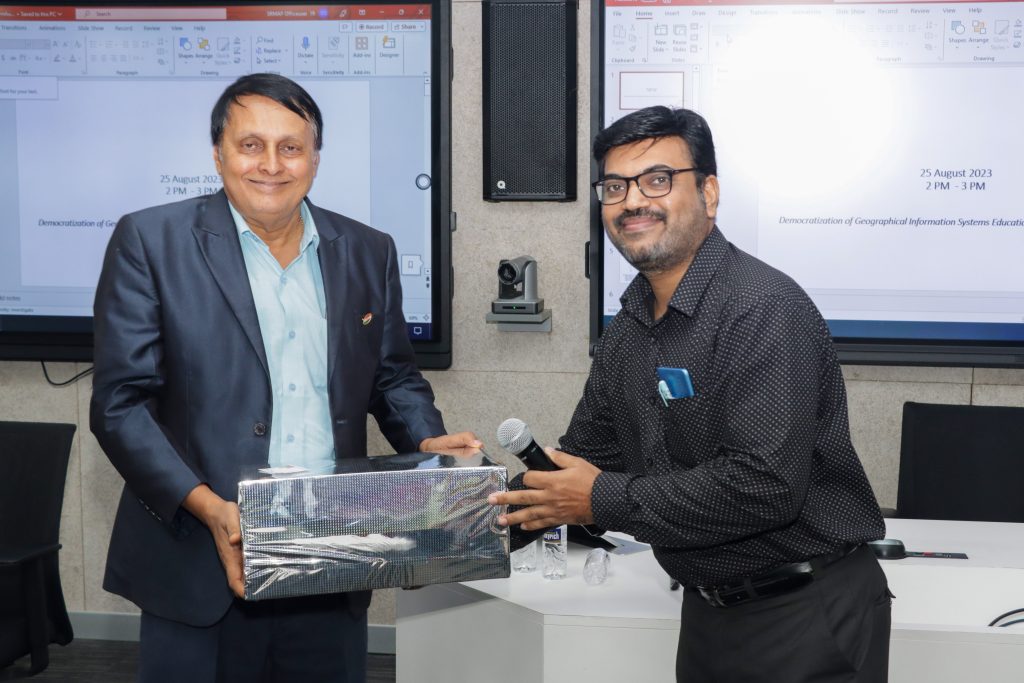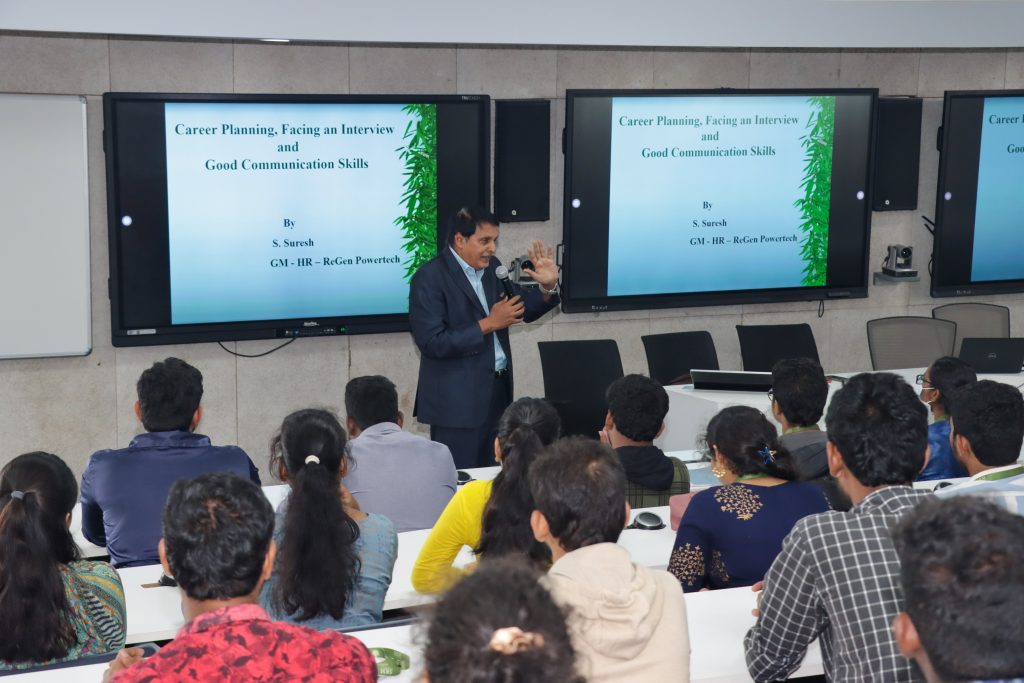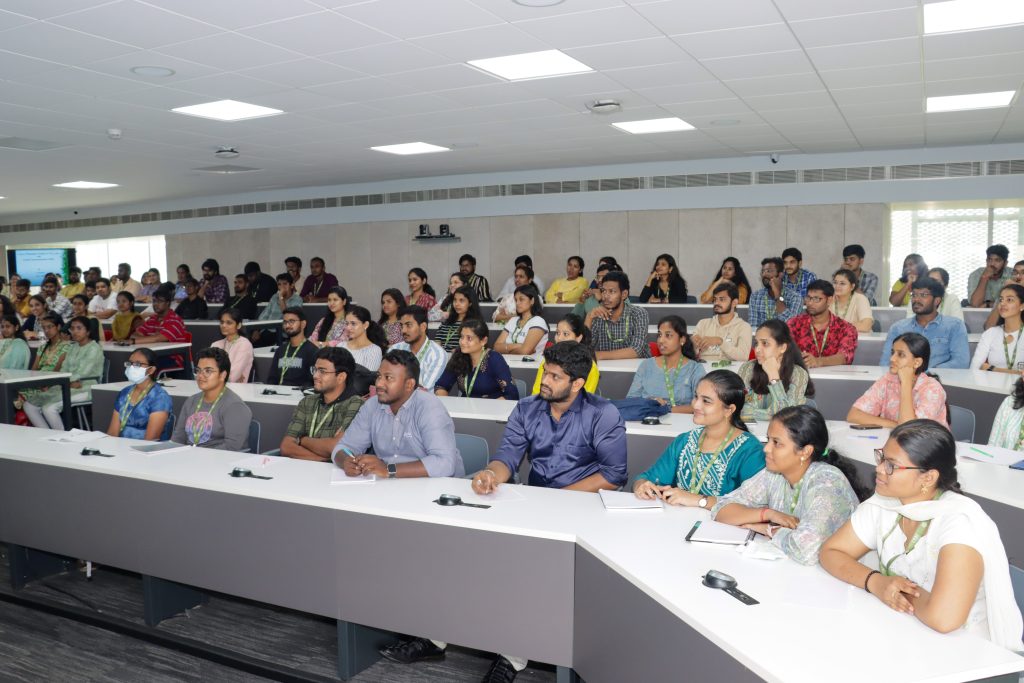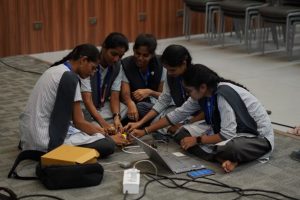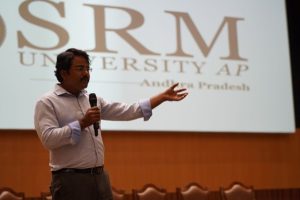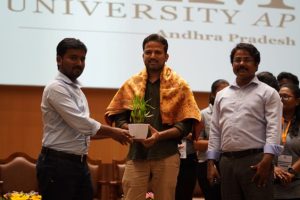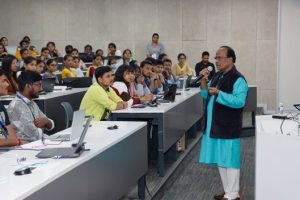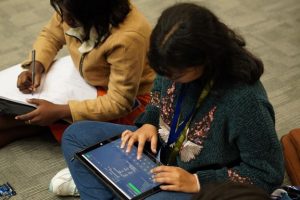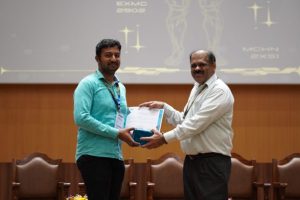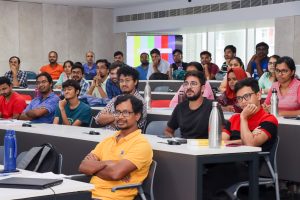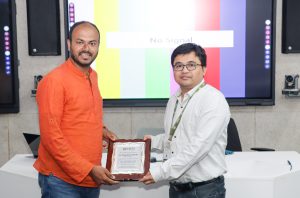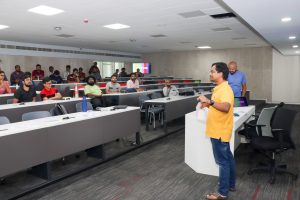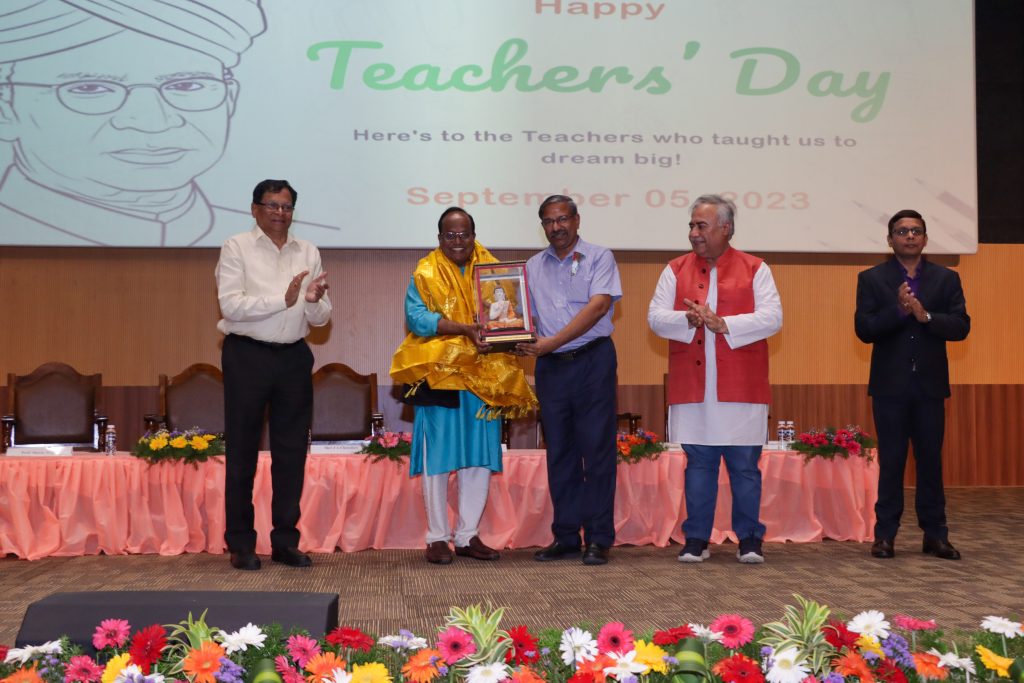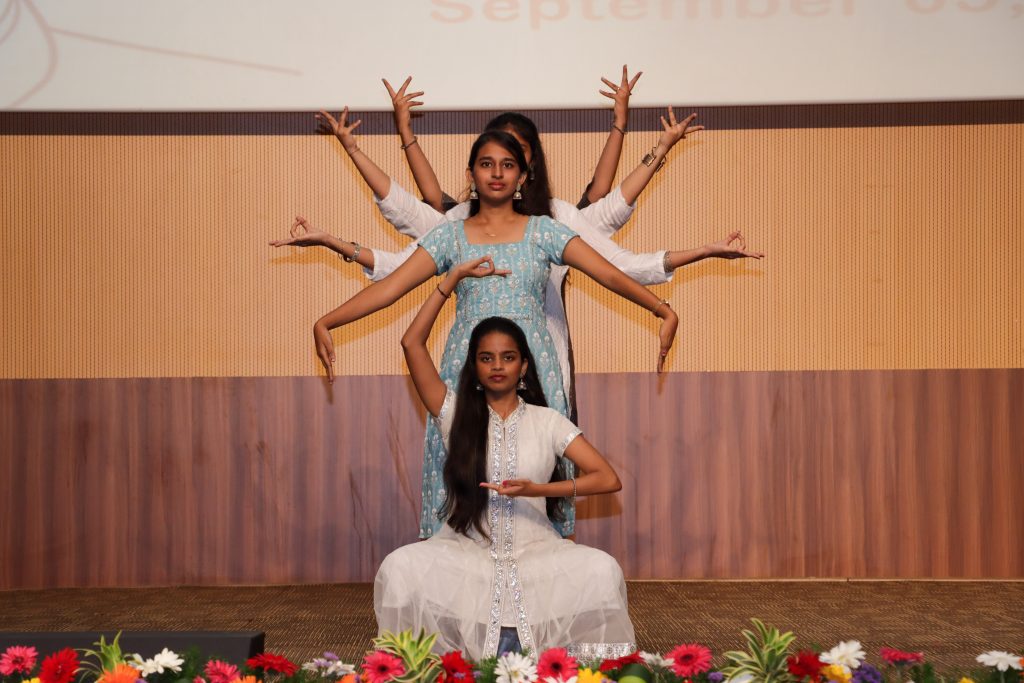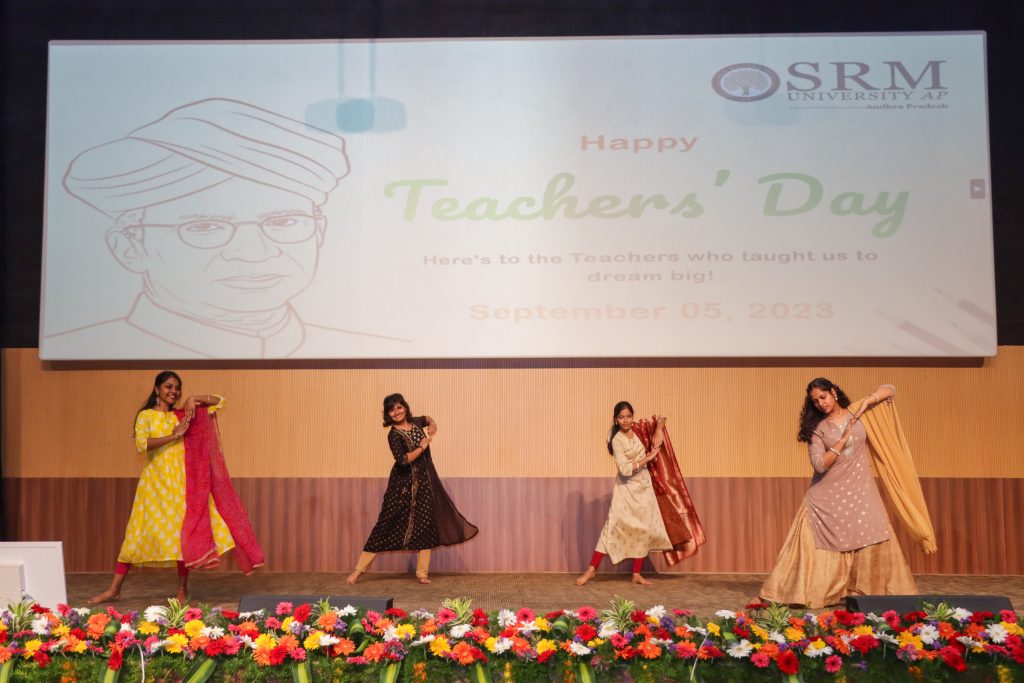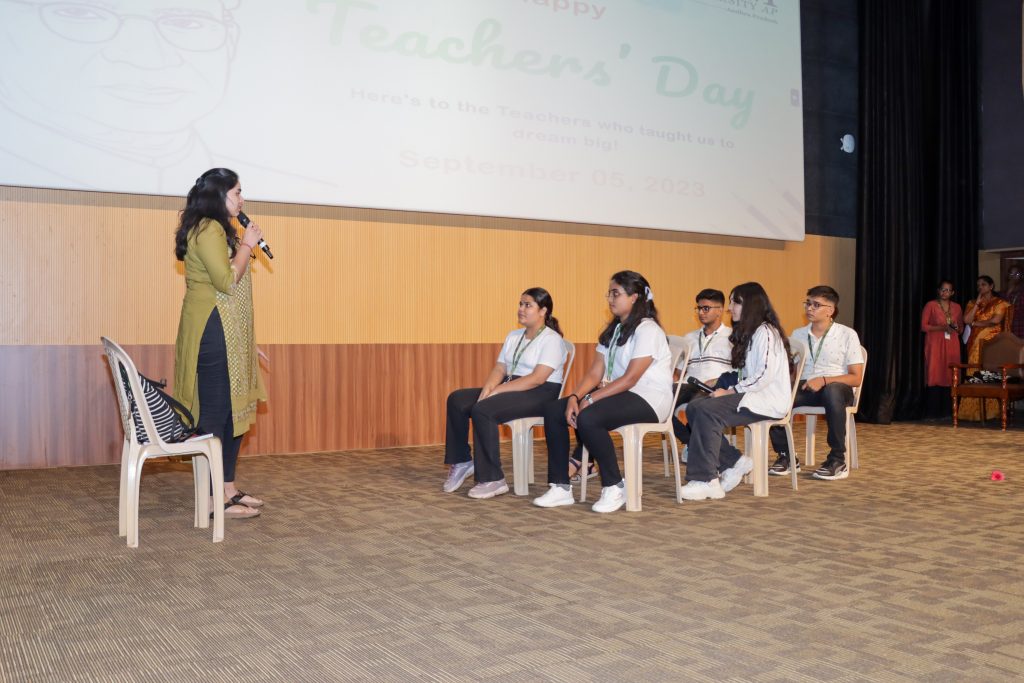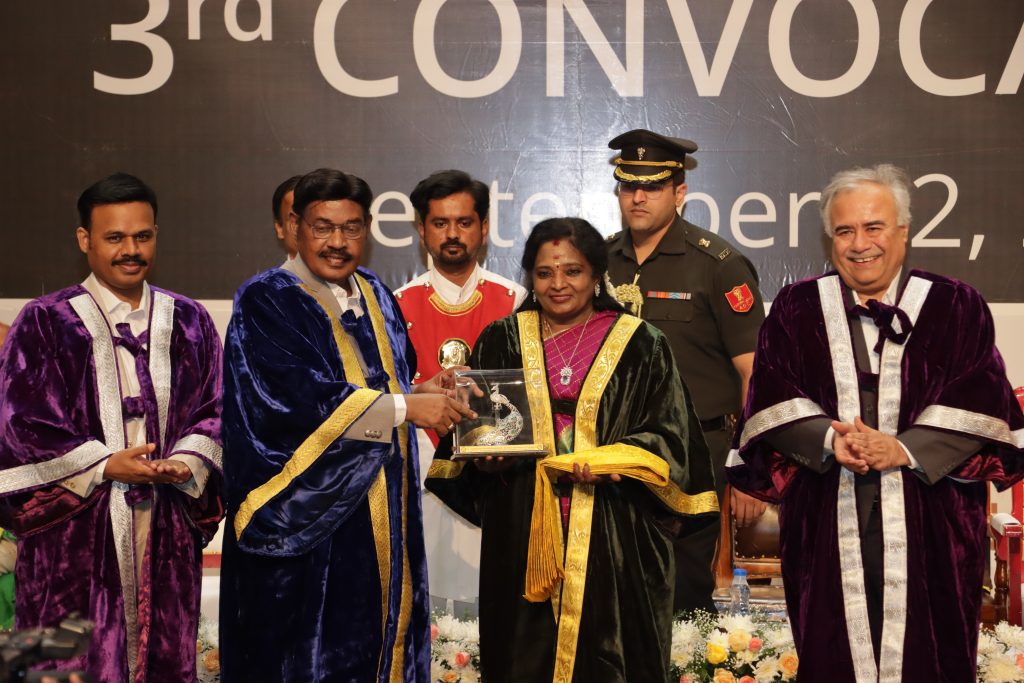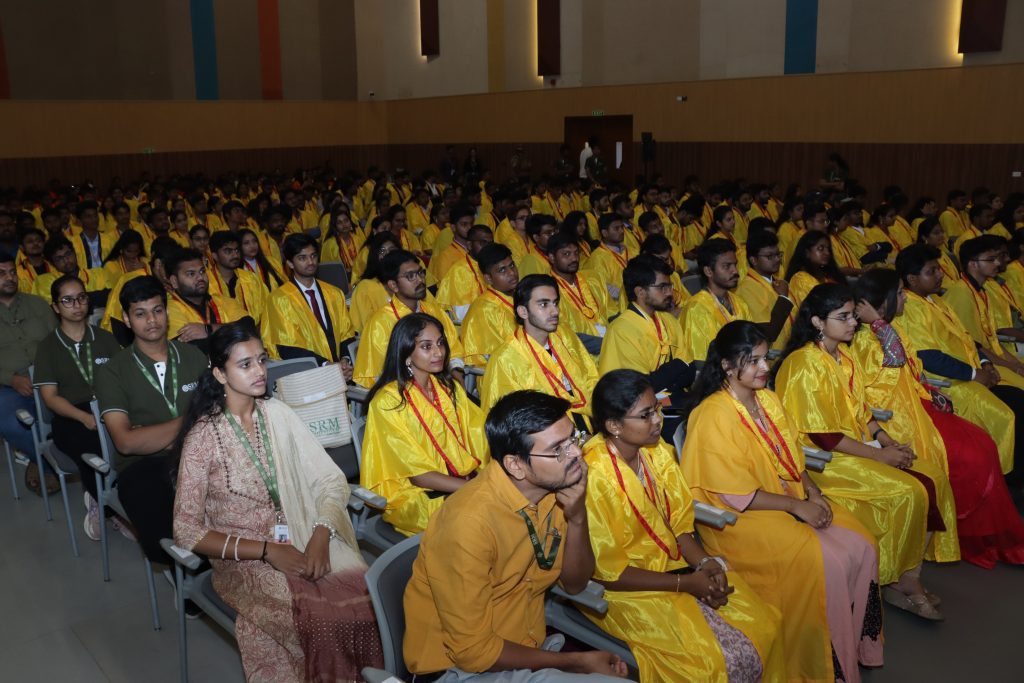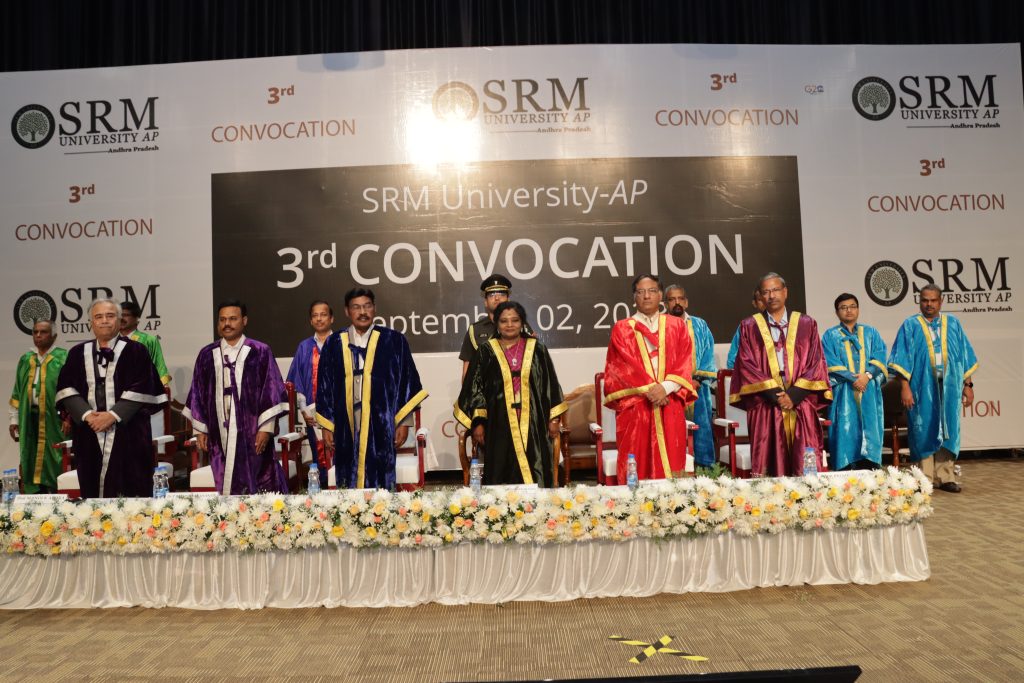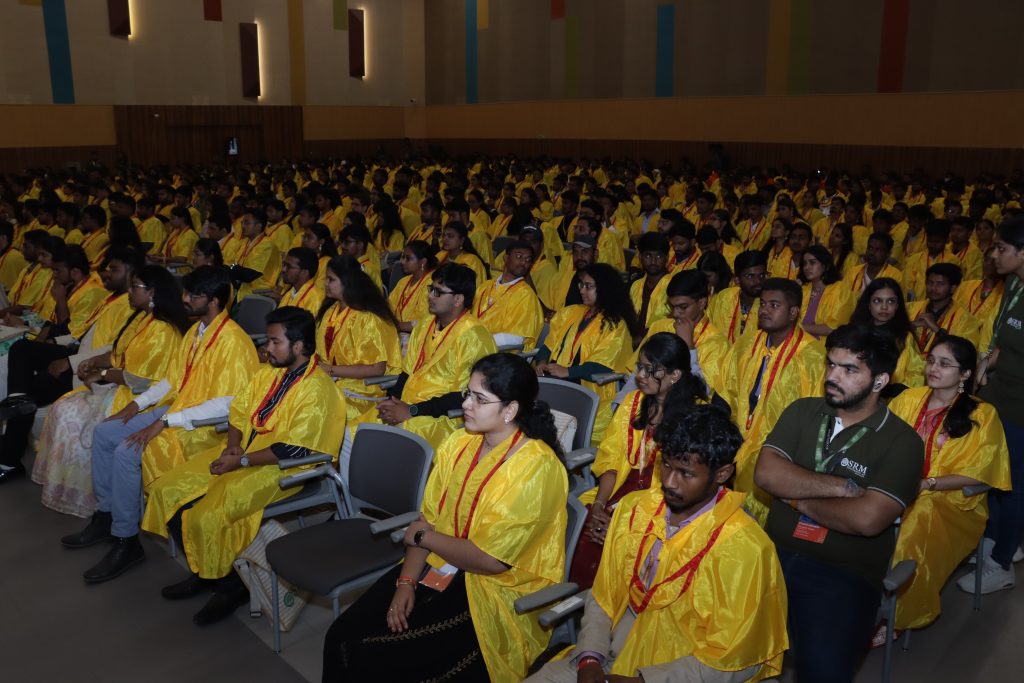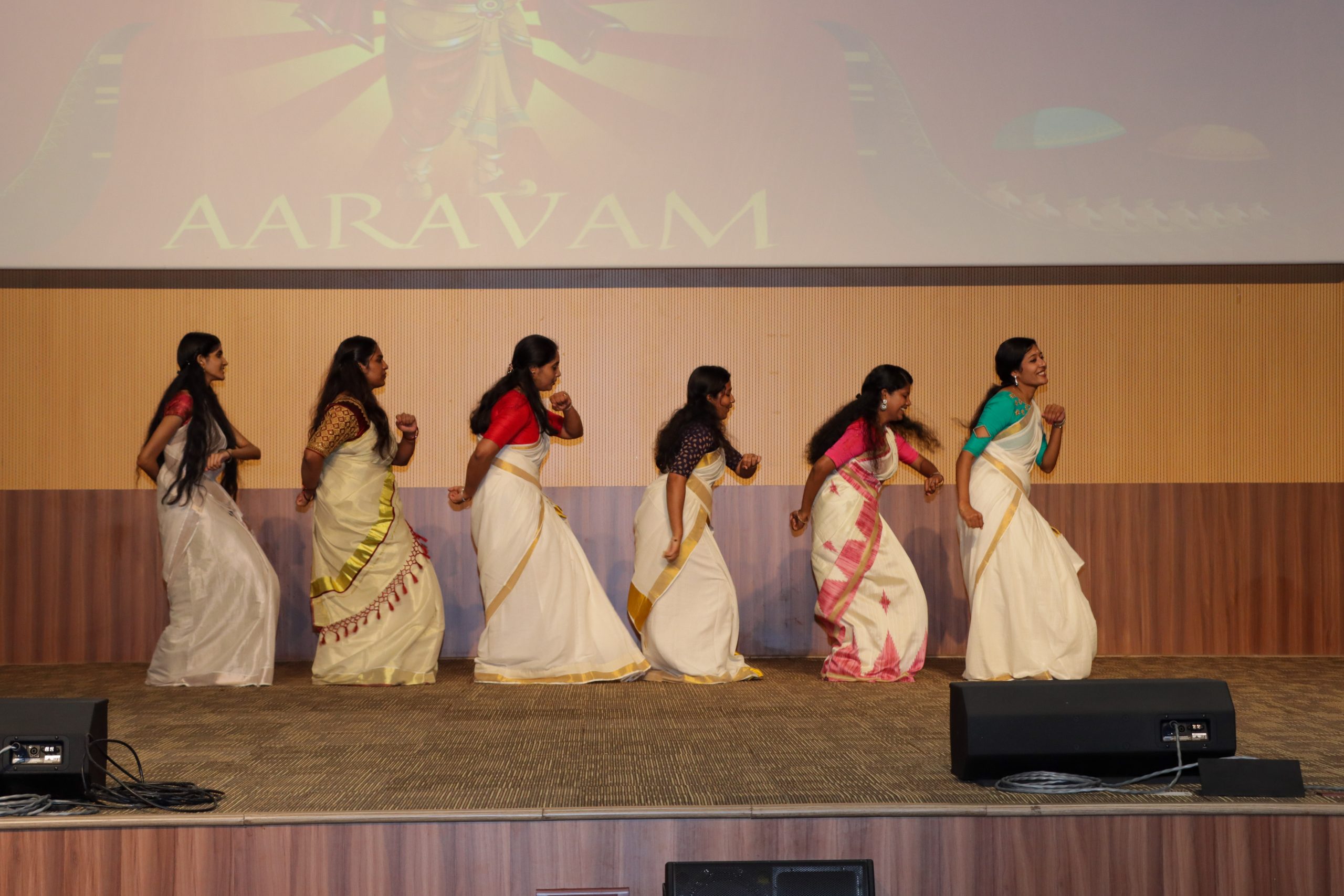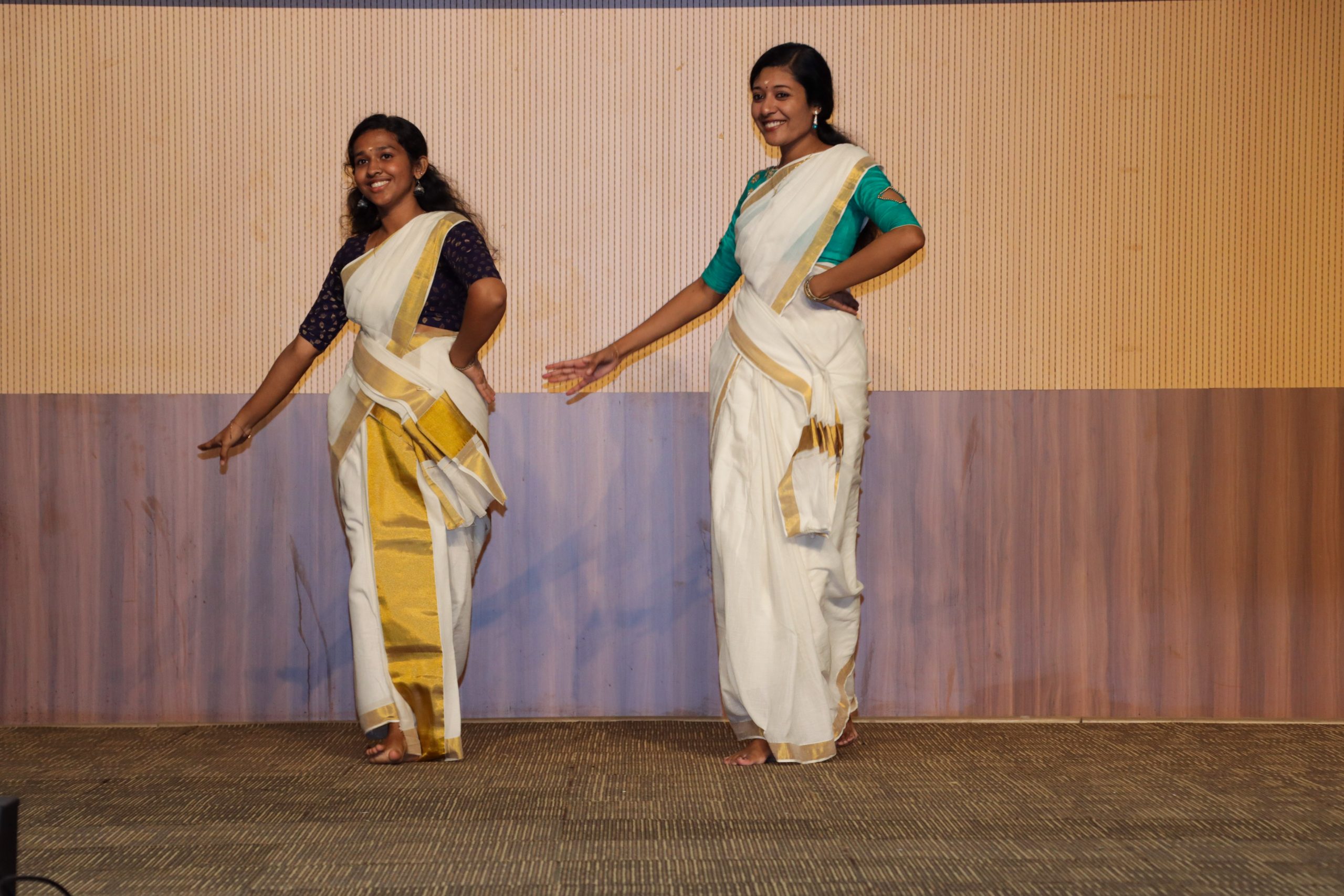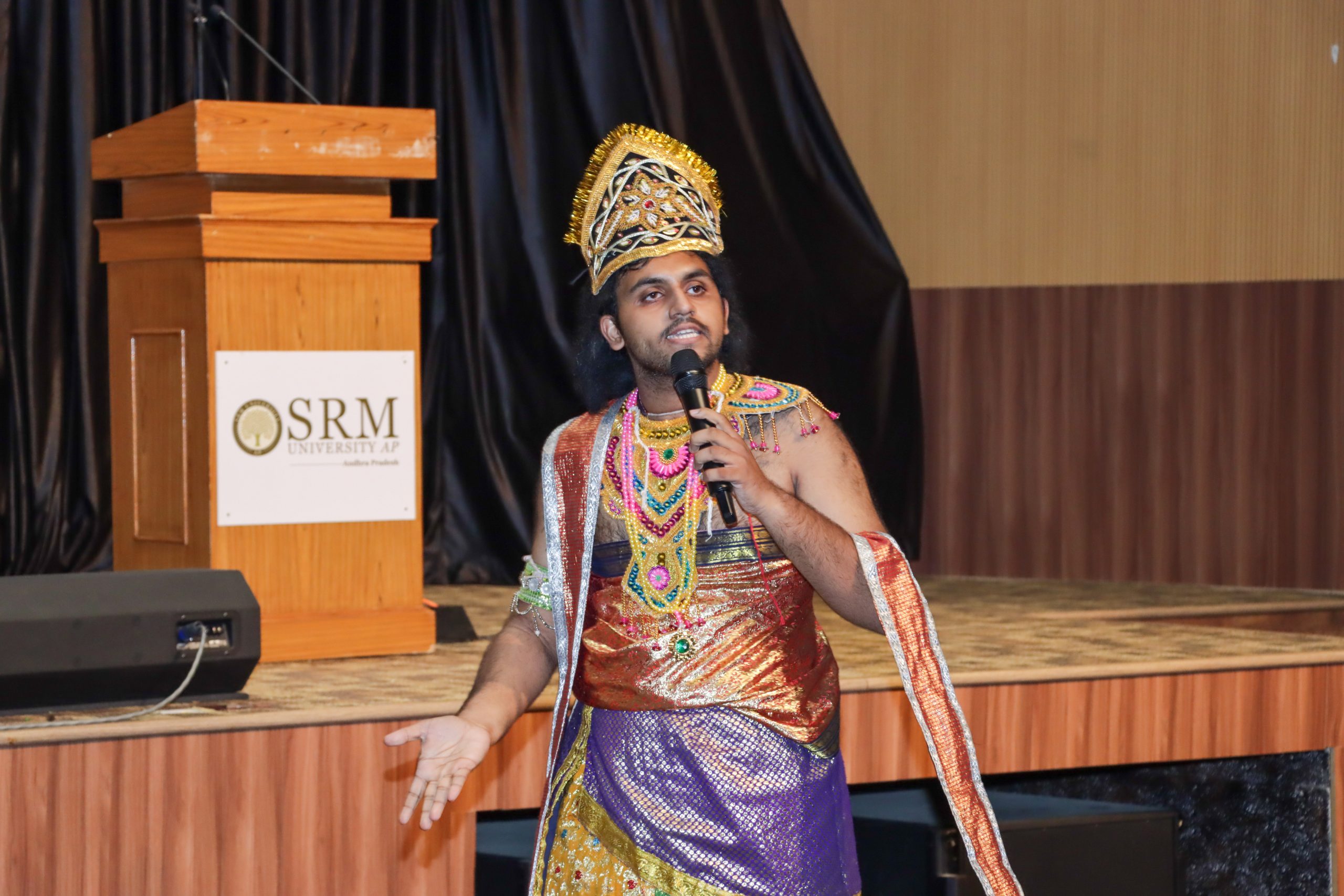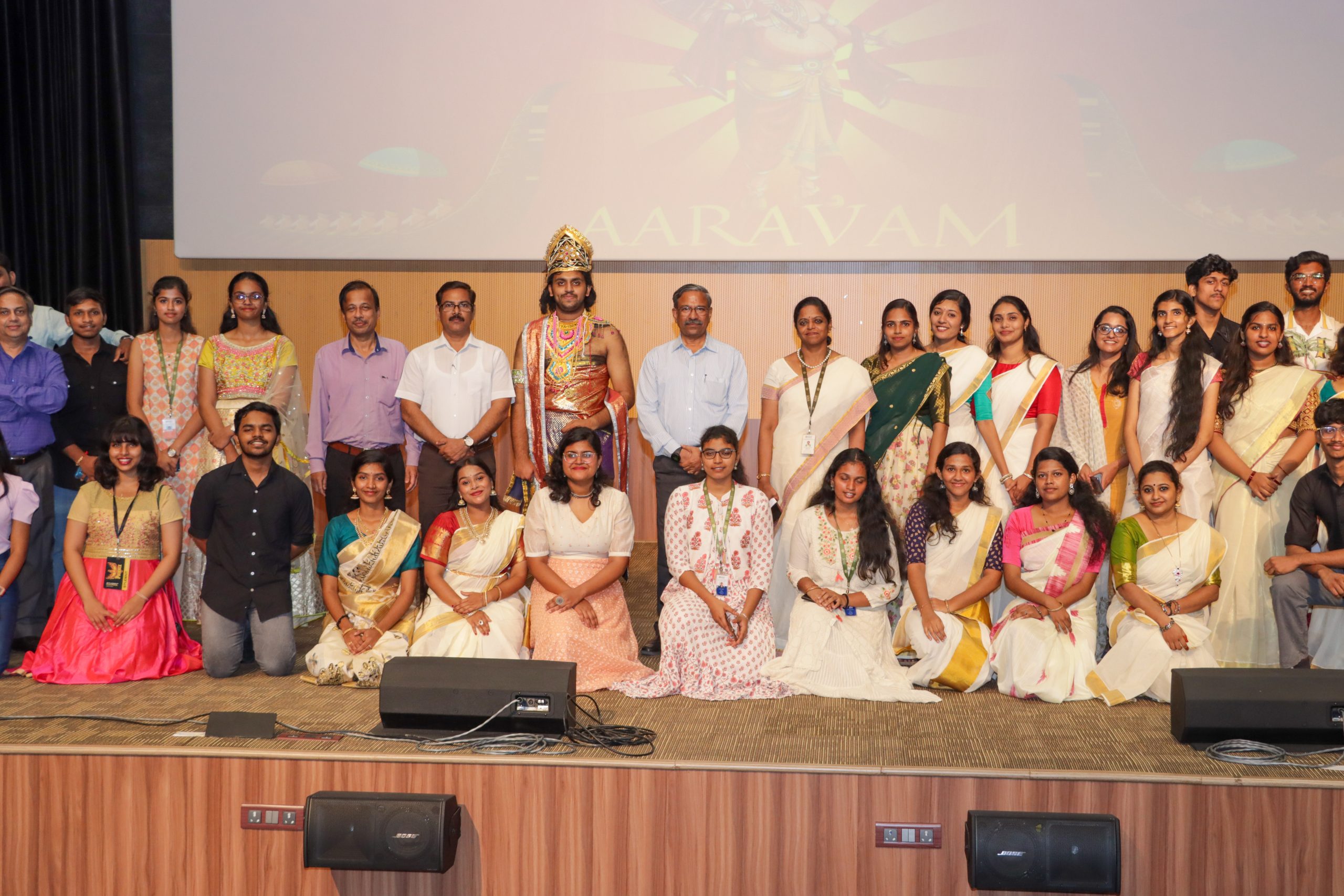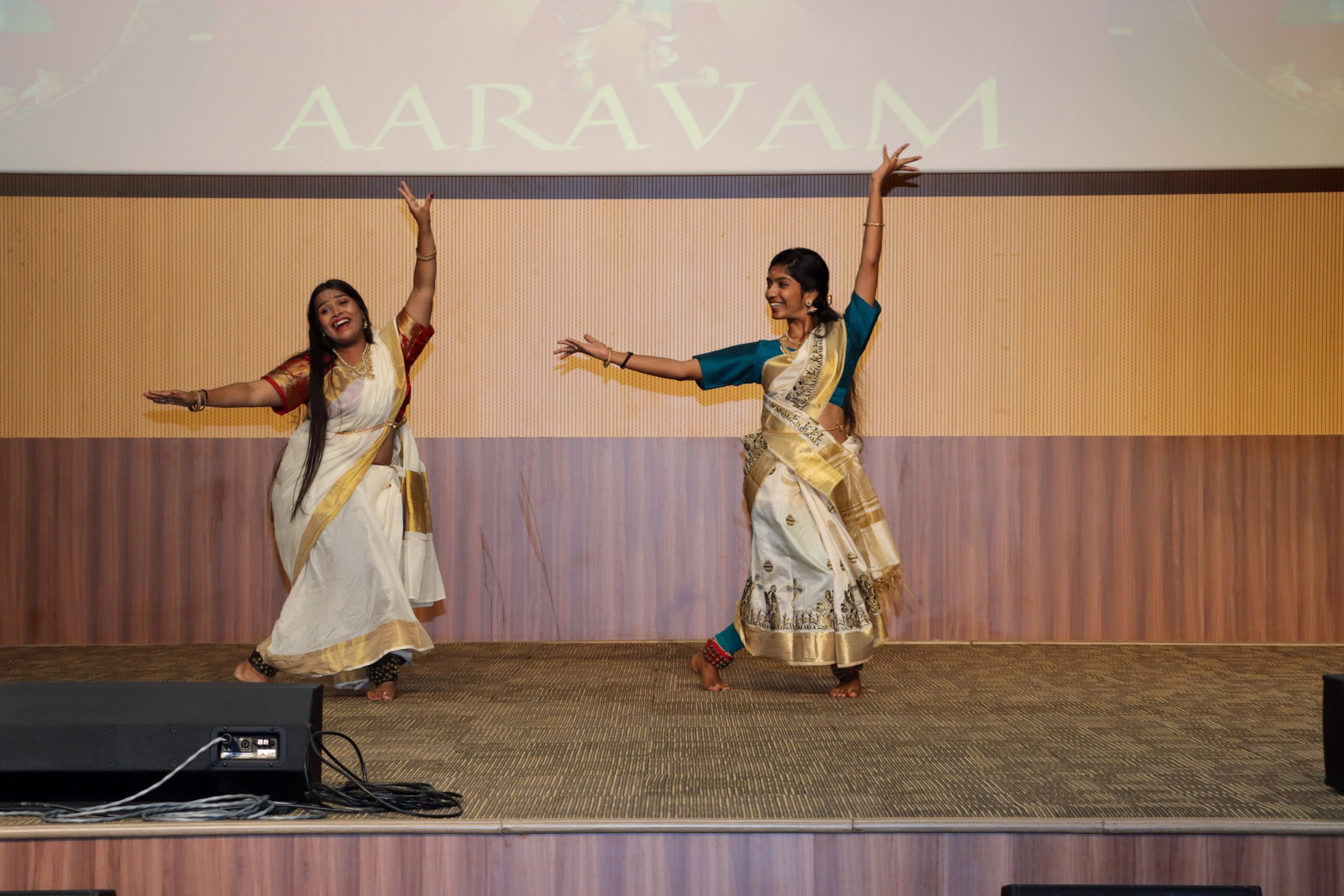SRM-AP All News
ALL News
- Professors Deliver a 3-Day Workshop at IARE on NEP Aligned Curricula September 20, 2023
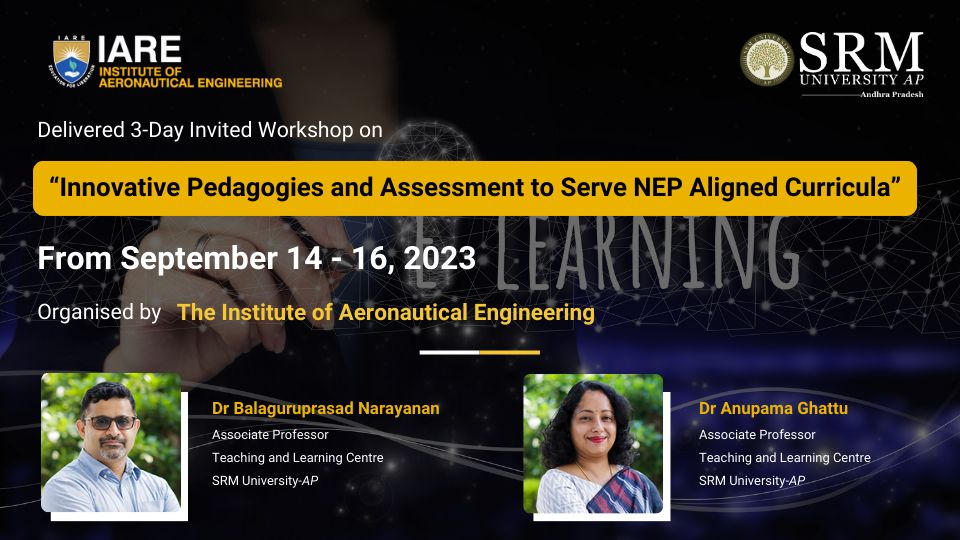
Dr Balaguruprasad Narayanan and Dr Anupama Ghattu, Associate Professors from the Teaching and Learning Centre, SRM University-AP delivered a 3-Day Outcome-Based Teaching & Learning Workshop on “Innovative Pedagogies and Assessment to Serve NEP Aligned Curricula” at the Institute of Aeronautical Engineering (IARE) on September 14-16, 2023. IARE located in Dundigal, Hyderabad is a prestigious autonomous college that offers various undergraduate and graduate programs with 23 years of rich experience in the higher education arena. The 3-day workshop was hosted with the objective of introducing active learning pedagogies and assessment strategies to the faculty of IARE that are engaging, student-centric and aligned with NEP.
The workshop included various sessions on Revisiting existing curriculum to align with the NEP and adopting effective learner-centred approaches to build on their learning; Demonstration of various active learning pedagogies to cater to the needs of the 21st-century learners and how to enhance their learning experience; and a session on the different assessment tools and evaluation techniques that provide an opportunity to assess the learner for further progress.
Dr Anupama addressed and demonstrated the active learning strategies that can be used in the classrooms to encourage student participation, promote higher-order thinking, and increase engagement and accountability of learning. Through her session, she illustrated the importance of assessment and how it must be mapped with the student learning activities to assess their learning and encourage them to work towards their aims. Dr Balaguruprasad discussed the NEP and its guidelines for higher education and how it is important to align the curriculum in line with NEP to facilitate classroom learning that instils 21st-century learning skills in students and how active learning strategies can enhance learning experiences.
Continue reading → - An Enriching Session on Cracking Job Interviews September 15, 2023
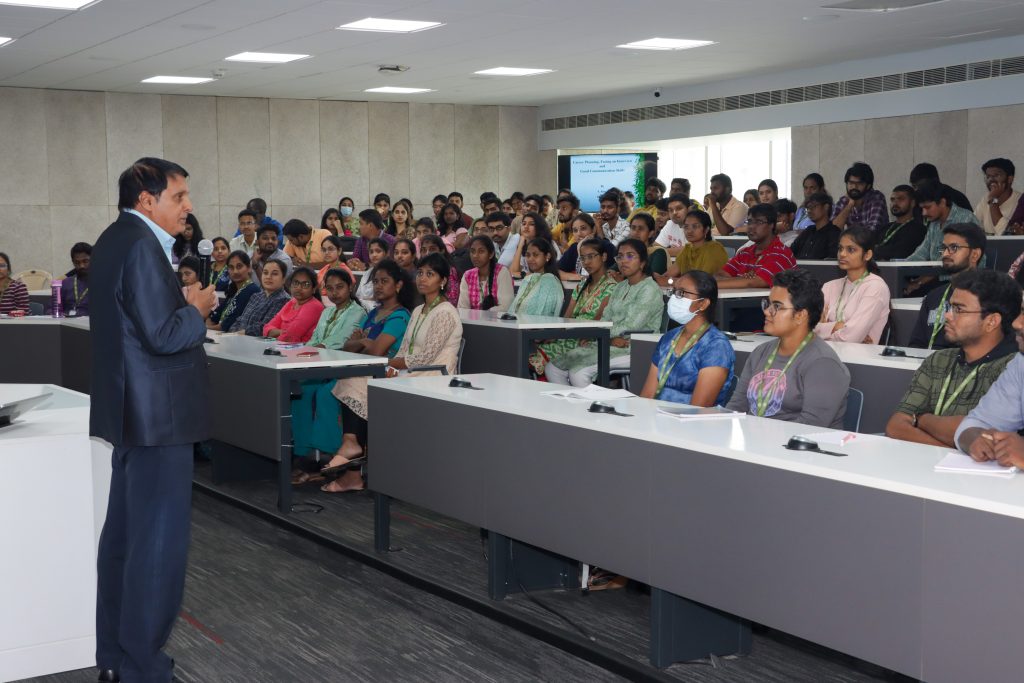
The Paari School of Business successfully concluded its session on career development. Mr. Suresh S, a seasoned HR professional with years of experience, engaged students with informative segments on career planning, acing job interviews, and enhancing communication skills.
During the career planning segment, attendees were reminded of the critical importance of completing their courses and were enlightened about the more rigorous elimination processes often found in larger companies. The seminar emphasised the need for clarity in one’s career goals, whether it involves pursuing higher studies, venturing into entrepreneurship, or exploring international opportunities. The resounding message was to “dream big” and strive for ambitious career aspirations.
The interview segment of the seminar provided illuminating insights into the rapid evaluation process that candidates face during job interviews. The seminar also delved into Maslow’s Theory of Management, emphasising the significance of mastering the fundamental principles. A major takeaway from the event was the emphasis on merit over recommendations, highlighting the importance of proving one’s capabilities through skills and qualifications.
The seminar also equipped attendees with practical tips for interview success. These included guidance on dressing appropriately, avoiding squeaky shoes, mastering the art of tying ties, punctuality, and conducting thorough research about the prospective employer. Participants were encouraged to create clear and concise resumes, carry extra copies of their resumes and testimonials, and ensure that their references were in order. The event underscored that the first impression often leaves a lasting mark, making preparation and presentation crucial.
Effective communication skills were another key focal point, with an emphasis on articulating strengths and weaknesses concisely and convincingly. The seminar was a comprehensive guide for attendees, equipping them with the knowledge and skills needed to navigate the complex job market successfully.
Continue reading → - Robotrix: A Stepping Stone in the Field of Robotics September 15, 2023
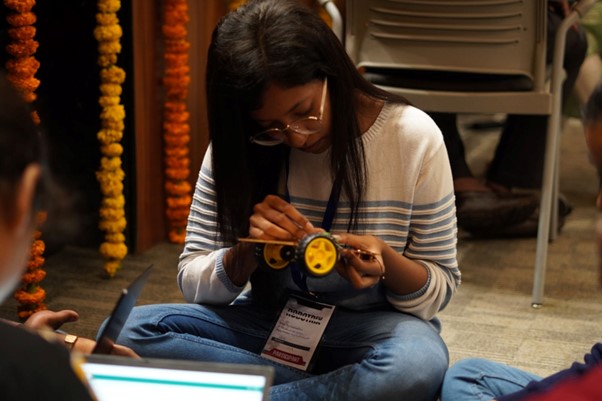
IndustreeOwl and Home of Leaders, Directorate of Entrepreneurship and Innovation conducted a 2-day experiential Hands-on workshop on Robotics named ROBOTRIX on September 05 and 06, 2023, in collaboration with OSSEB, a Hyderabad-based company focused on providing students with relevant skillset according to industry demands. The workshop witnessed the presence of Mr Mohammad Abdul Khayyum, Chief Executive Officer of OSSEB, and Mr Ashish Kumar, who assumed the role of mentor for the two-day event. The guest mentors attended the workshop on behalf of OSSEB, signifying their active engagement and commitment to the workshop’s primary objective to provide students with essential knowledge as a crucial stepping stone for their future endeavours.
The workshop was conducted on the topic “Hands-on Experience on Android Controlled Robotics and Bluetooth Communications”. Students were encouraged to develop their own robots that could be controlled via their Android Phone’s Bluetooth. 139 students registered for the workshop out of which 122 people attended the 2-Day hands-on workshop with many participants registering on-spot. The students were eager to participate and learn about Robotics. Out of 122, almost 50 per cent of the participants were from the NRI Institute of Technology, Vijayawada.
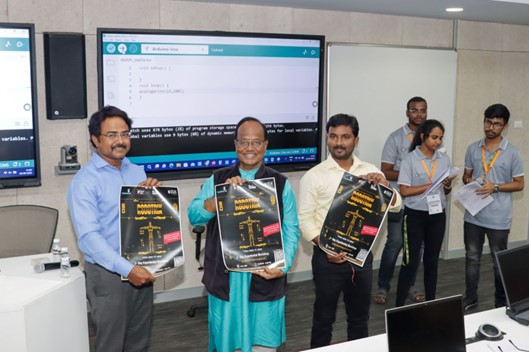
The Workshop also included sessions on the basics of electronics and robotics where students were made to understand the concepts like Flow of Current in a battery, Motors, etc. along with the laws of Robotics and their applications. Insight into how, in the near future Robotics will ally with Artificial Intelligence to give a new shape to the world, was also discussed. This was followed by a session on hands-on activities where participants were formally instructed in the intricacies of programming the robot to facilitate its operational functionality and how to connect to the Robot with the help of the kit provided by OSSEB with their Code.
An Eminent Guest lecture featuring Shri J A Chowdhury, former ISRO scientist, Technological Leader and innovator who has been contributing to the development of the Indian IT industry for more than 35 years was conducted on the grand occasion of Teacher’s Day. He shared his professional experience including his understanding of Robotics and how it will be pivotal in shaping the future. Shri J A Chowdhury along with Mr Udayan Bakshi, Associate Director and Mr Sundhar Singh, Manager-Outreach, Directorate of Entrepreneurship & Innovation inaugurated the Robotrix poster symbolising this momentous Workshop.
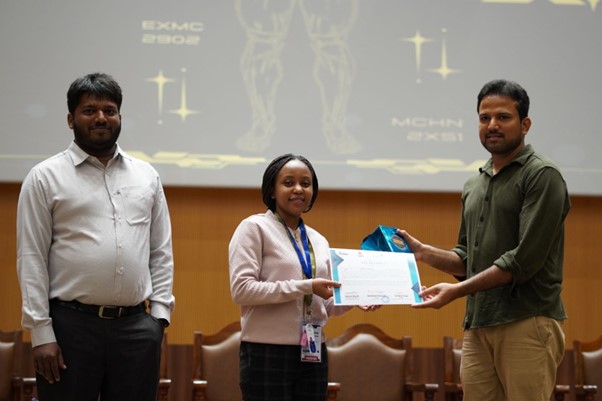
A Presentation Competition was spontaneously conducted by the IndustreeOwl team aimed at actively involving the students and fostering their practical application of the newly acquired knowledge. Pallavi Madala and Fadzai Ethel Muchina from SRM University-AP secured the first and second prize respectively.
The second day saw a continuation of hands-on training where participants were taught to develop the code for controlling the movement of the Robot. They were also taught about Bluetooth Communications and were urged to install an application in their phone which will be pivotal in controlling the Robot. The session was followed by a Quiz Competition that saw the participation of more than 100 students. Yaswanth Dhulipalla from SRM University-AP bagged the first prize, whereas Saikeerthi Aluri and Punuru Varsha Reddy from SRM University-AP won the second and third prizes respectively.
The event successfully concluded with a speech and vote of thanks by Mr Udayan Bakshi where he urged the students to continue moving forward in their Robotics journey with the help of the kits and the mentors from OSSEB. He also felicitated the guests and mentors from OSSEB and the team of IndustreeOwl for the smooth conduction of the Workshop.
The workshop has not only met but exceeded its objective of imparting students with a foundational understanding of Robots and Robot Design. This newly acquired knowledge will undoubtedly serve as a solid stepping stone for them in their future endeavours, equipping them with valuable skills and insights that will open up exciting opportunities and possibilities in the world of robotics and design.
Continue reading → - SRM University-AP hosted AIS School on p-adic methods in Arithmetic September 8, 2023
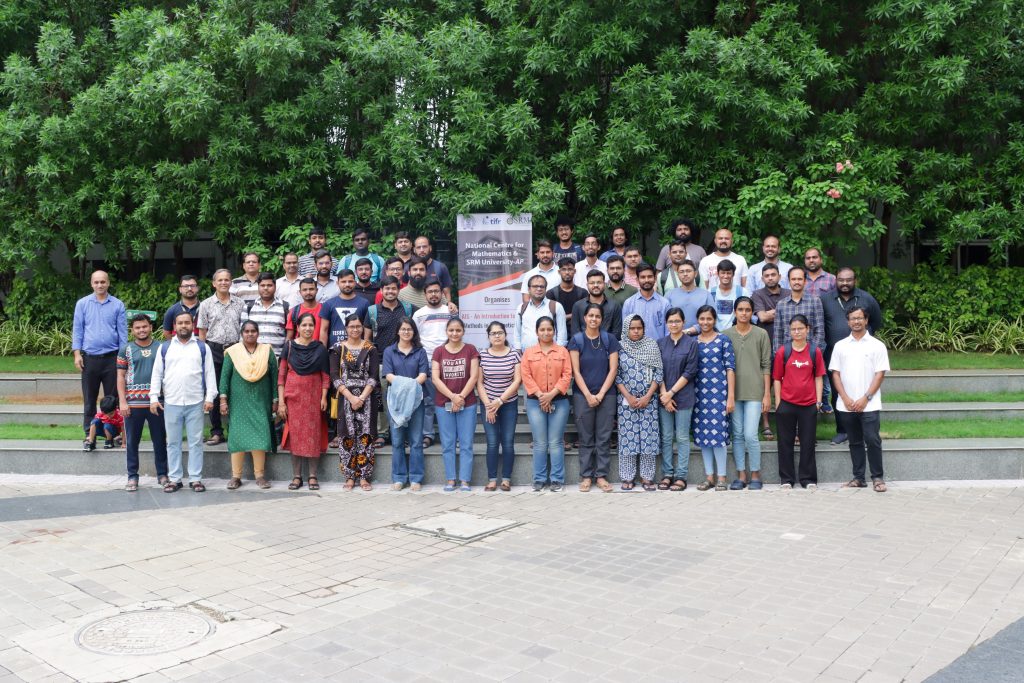
The Department of Mathematics, in collaboration with the National Centre for Mathematics, organised an AIS school on p-adic methods in Arithmetic from June 26 to July 15, 2023 at the campus. Over 58 students, research scholars, post-doc fellows and faculty from reputed universities such as IIT Hyderabad, IIT Guwahati, IISER, University of Hyderabad, Pondicherry University, Banaras Hindu University etc. participated in the three-week-long AIS school, which was conducted with the prime objective to study the p-adic numbers and the p-adic methods in arithmetic.
Prof. C S Rajan, Ashoka University; Dr Manish Kumar Pandey and Dr Sazzad Ali Biswas, SRM University-AP; Dr Amiya Kumar Mondal, IISER Berhampur; Dr Santosh Nadimpalli, IIT Kanpur; Dr Shaunak Deo, IISc, Bangalore; and Dr Mihir Sheth, Post-Doc, IISc, Bangalore were the speakers at the school. The sessions were delivered in collaboration with course associates /tutors. Dr Arindam Jana, Postdoc, TIFR Mumbai; Dr Ravitheja Vangola, Postdoc, IISC Bangalore; Mr Sagar Shrivastava, Mr Manodeep Raha, and Mr Niladri Sekhar Patra, PhD scholar, TIFR Mumbai were the tutors mentoring the participants.
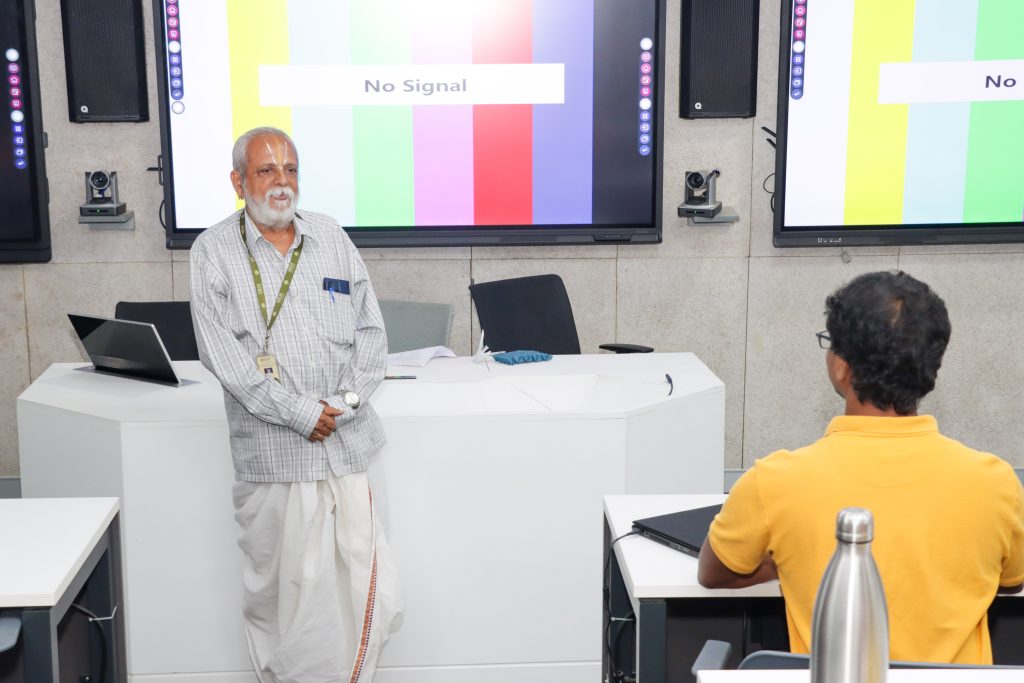
Prof. C S Rajan delivered 9 lectures – four lectures in the first week of the programme and five lectures at the end of the programme. The first part of his session covered topics such as Hensel’s Lemma and Local-Global Principle while the latter part focused on the Main Conjecture of Iwasawa Theory and Introduction to the work of Ribet (Converse to Herbrand) and subsequent work.
Dr Sazzad Ali Biswas offered his insights on topics like Construction of p-adic numbers, Various Properties (algebraic and Analytic) of p-adic numbers, Arithmetic operations of p-adic numbers and Local-Global Principle in five sessions. Dr Manish Kumar Pandey gave two lectures on the Special values of the Riemann zeta functions.
Local Fields, Global Fields and p-adic algebraic numbers were the focal points of the four lectures delivered by Dr Mihir Sheth. Dr Amiya Kumar Mondal took five lectures on Modular Forms and Dr Santosh Nadimpally gave five lectures on the Construction of p-adic zeta functions and the Various properties of p-adic Zeta function. Dr Shaunak Deo dealt with topics including Cyclotomic Fields, Iwasawa’s Construction of p-adic L-fucntions and p-adic Family of Modular Forms through six lectures.
The AIS School was organised by Prof. C S Rajan of Ashoka University and Assistant Professors Dr Manish Kumar Pandey and Dr Sazzad Ali Biswas of the Department of Mathematics at SRM University-AP. The programme successfully concluded with the active participation of students, scholars and faculty who assembled to exchange constructive discourse on p-adic methods in Arithmartics.
Continue reading → - Faculty Honoured for Outstanding Services on Teachers Day Celebration September 6, 2023
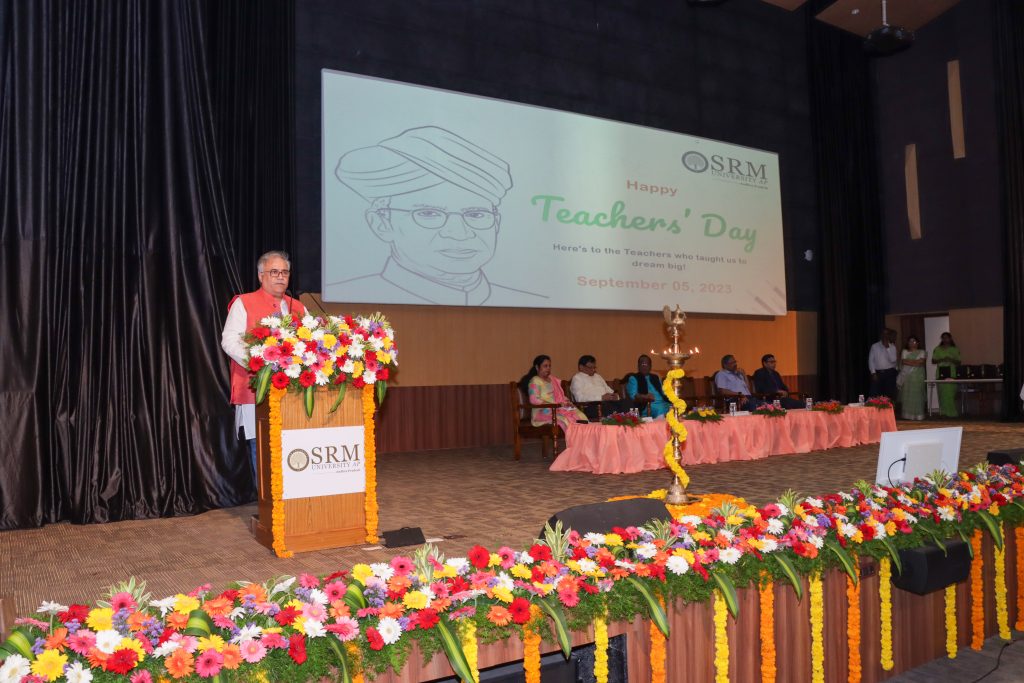
SRM University-AP enthusiastically joins the global flare of Teachers’ Day festivities, to honour and appreciate the incredible services of the teaching community. Students and staff of the varsity joined hands to put forth a heartfelt tribute to their exemplary services.
The programme saw the participation of Mr J A Chowdary as the distinguished Chief Guest for the event. Mr Chowdary is an Entrepreneur, Technology Leader and Innovator and is credited as one of the key architects of the HI-TECH City and Cyberabad in Hyderabad and in founding the International Institute of Information Technology Hyderabad (IIITH), and the International Institute of Digital Technologies (IIDT) at Tirupati.
During the occasion, Vice Chancellor, Prof. Manoj K Arora cited, “We are moving from the role of teachers to that of mentors and facilitators”. He took the opportunity to enlist the core values of the university, namely Show Compassion, Develop Trust, Give Mutual Respect, Create a sense of Curiosity, Serve with Integrity and Instil Social Responsibility and encouraged the faculty to align themselves to the same. Prof. Arora also announced five prominent awards for the Research Day to be held on November 17, 2023. The awards will be given out in the categories of Best Experimental Researcher, Best Theoretical Researcher, Best Industrial Researcher, Best Social Researcher and Best Young Researcher Award.
Chief Guest, Mr J A Chowdary spoke in his address on India as a land of opportunities for startups. He stated, “Most jobs in future are going to be automated and existing jobs will disappear.” In an interactive session with students, the guest also quoted that startup failures in Silicon Valley are irrelevant to India’s scenario, as for today, 9 out of every 10 startups are successful.
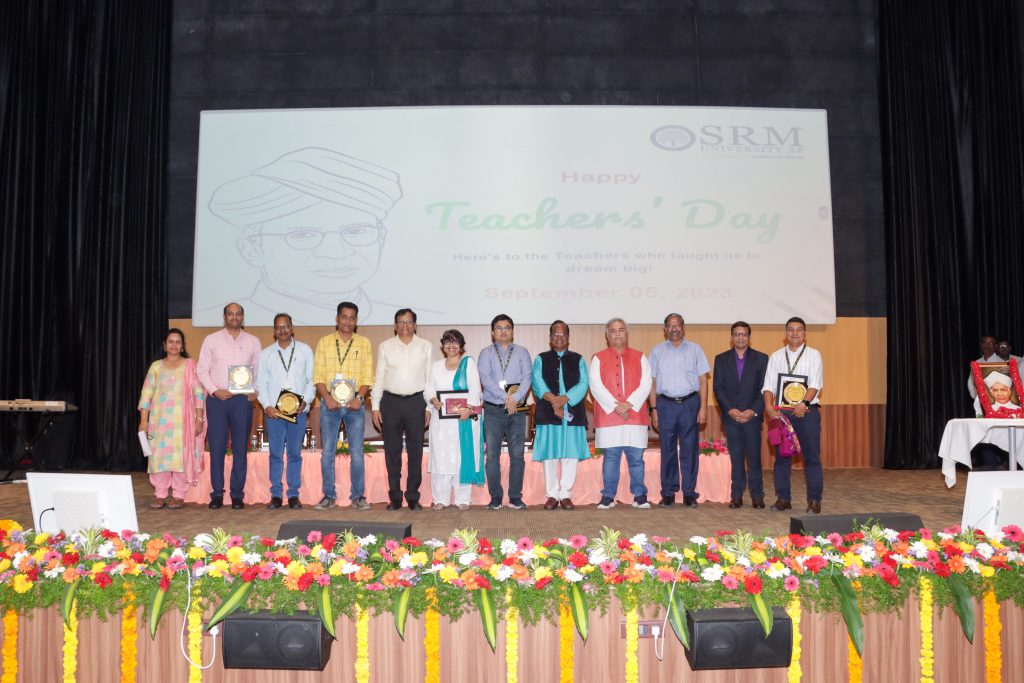
The event also saw the announcement of the Outstanding Teacher Awards. Prof. Ranjit Thapa, Dean i/c-School of Engineering and Sciences and Dean-Research; Dr V M Manikandan, Assistant Professor, Department of Computer Science and Engineering; Dr Jatindra Kumar Dash, HoD, Department of Computer Science and Engineering; Dr Murali Krishna Enduri, Assistant Professor, Department of Computer Science and Engineering; Dr Srabani Basu, Associate Professor & HoD, Department of Literature and Languages; and Dr Karthik Rajendran, Associate Dean-Quality and Assurance Rankings & HoD, Department of Environmental Science and Engineering were honoured with the Outstanding Teacher Awards. The award recipients were also seen delivering an acceptance speech and expressing their gratitude to the varsity and students.
The ceremony witnessed the varsity awarding the Five Year Services Award to its dedicated employees. The event concluded with students putting up beautiful performances for their beloved teachers and other memorable moments.
Continue reading → - Research on Tribal Communities Receives Green Flag from ICSSR September 4, 2023
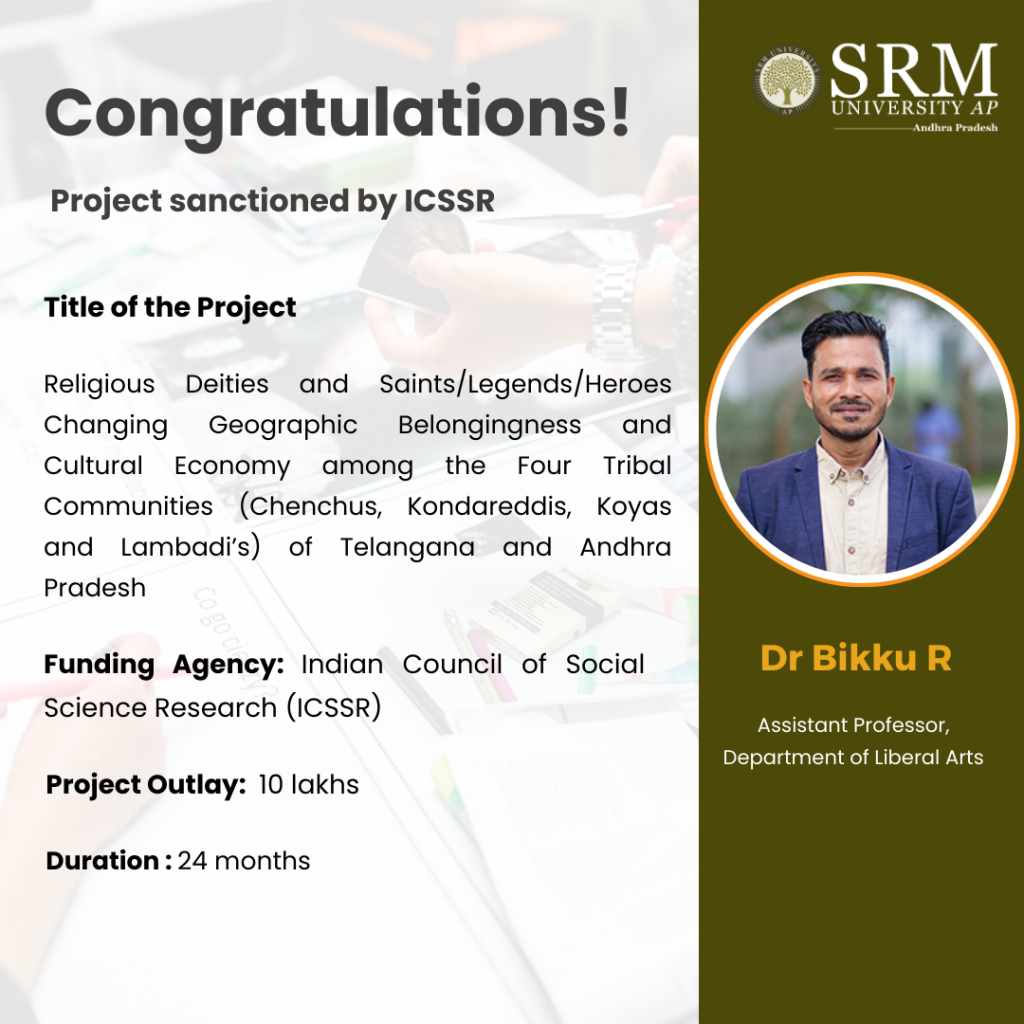
SRM University-AP proudly announces that Dr Bikku R, Assistant Professor at The Department of Liberal Arts has been sanctioned a major research project by the Indian Council of Social Science Research (ICSSR). The research project titled “Religious Deities and Saints/Legends/Heroes Changing Geographic Belongingness and Cultural Economy among the Four Tribal Communities (Chenchus, Kondareddis, Koyas and Lambadi’s) of Telangana and Andhra Pradesh” will receive an outlay of Rs. 10.00 Lakhs.
Congratulations, Dr Bikku on this outstanding achievement!
Research Abstract
India is one of the most diverse countries in the world, where around 705 scheduled tribes are notified with their distinct culture, and as per the 2011 census, they constitute 8.6% of the total population. Out of these, 75 communities belong to Particular Vulnerable Tribal Groups (PVTGs), having declining or stagnant populations, low literacy rates, pre-agricultural technologies and economic backwardness. For tribal communities, culture, economic, political and geographical belongingness are distinct from non-tribals in India. Studying their religious beliefs and practices and changing cultural economies and landscapes is crucial to preserving India’s diverse cultures. The existing studies by social scientists have not emphasised much on tribal saints/ heroes, changing cultural economies and landscapes in India, particularly in the newly bifurcated southern states, Telangana and Andhra Pradesh. The study focuses on religious deities and Saints/Legends/Heroes, changing geographic belongingness and cultural economies among the four tribal communities (Chenchus, Kondareddis, Koyas and Lambadis) of Telangana and AP states of India. Qualitative (ethnographic) and quantitative methods will be used to map their deities and saints/legends/heroes, cultural economy and traditions and record memories of past and contemporary relationships with the belonging to their landscapes and natural resources.
Continue reading → - Hon’ble Governor of Telangana Felicitates Graduates at the 3rd Convocation Ceremony September 4, 2023
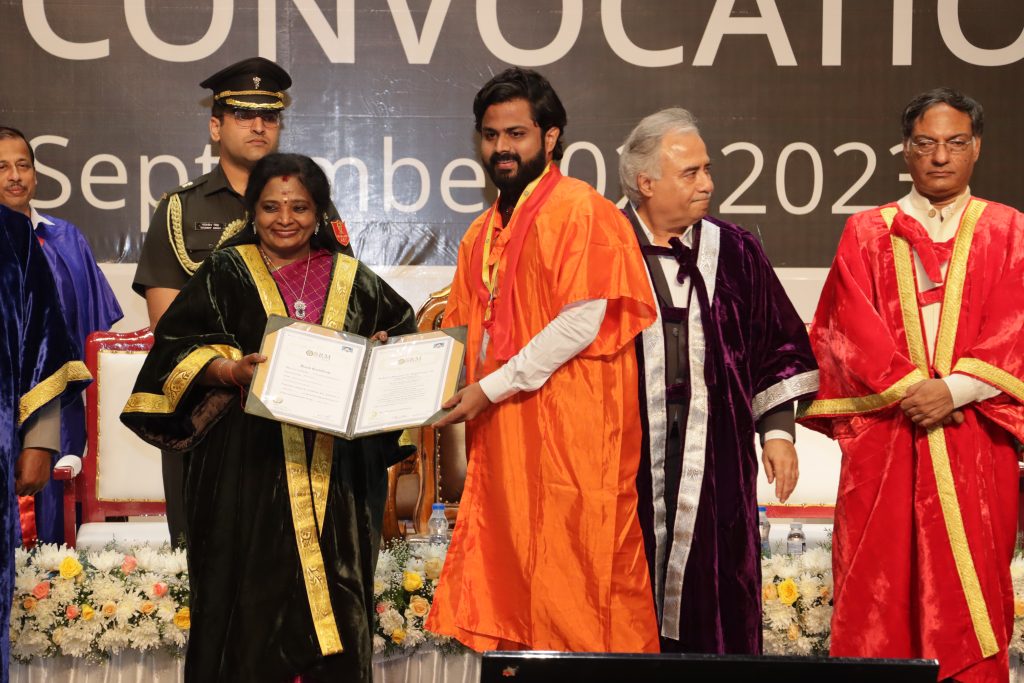
“Education provides you confidence. Sharpen your skills each passing day and visualise the development of your nation. Learn more than expected and earn more than expected is the ideology that we live by today”, Her Excellency Dr Tamilisai Soundararajan, Hon’ble Governor of Telangana, the chief guest of the 3rd Convocation Ceremony of SRM University-AP remarked while addressing the graduating Class of 2023.
The university has conferred the prestigious degrees to the Graduate Class of 2023 at the 3rd Convocation Ceremony on September 02, 2023, in the august presence of Guest of Honour, Prof. Ashutosh Sharma, President-Indian National Science Academy; Dr T R Paarivendhar, Founder Chancellor, SRM Group of Institutions; Dr P Sathyanarayanan, Pro-Chancellor; Prof. Manoj K Arora, Vice Chancellor, SRM University-AP; Other dignitaries; Deans of all schools, faculty, staff and parents of the graduating batch. A remarkable 883 graduates, including 13 PhD scholars, 17 Gold medallists, 6 Silver medallists and 2 Bronze medallists were awarded their degrees at the momentous ceremony held at the APJ Abdul Kalam Auditorium.
“In our objective of being globally connected, nationally relevant and regionally transformative university, we have adopted a five-year strategic plan with five goals – Achieve academic excellence, Intensify research, innovation and entrepreneurial spirit, Enhance student experience, Attain financial sustainability and Improve perception and visibility”, stated Vice Chancellor, Prof. Manoj K Arora in his welcome address. During his briefing about the annual report, Prof. Arora also highlighted the placements excellence of the past academic year. He commented, “In the last academic year, we have witnessed 100% placements with the highest package being 45 LPA and average salary of 9 LPA which is a 25% increase from last year. 15 students have received international offers from countries such as USA, Australia, Japan, Sweden etc. As we host the 3 rd convocation of the institute, we are proud to say we are a young university with 1500 alumni, of which 34% of them are working in Fortune 500 companies, 17% are studying abroad, 7 have their own startups.”
Founder Chancellor, Dr T R Paarivendhar, in his address to the young graduates, commented that India’s first solar launch, Aditya L1 and our country’s presidency over the G20 summit coincided with the students’ graduation and encouraged them to strive for excellence with love for family, their alma mater and country in their hearts. “Success in life needs to be balanced with philosophy and spirituality. SRM University-AP has prepared you for the transition of student to alumni, by imparting knowledge and the skill to learning how to learn. Use the skills you have acquired to pursue prosperity and contribute to the growth of society”, advised Pro-Chancellor, Dr P Sathyanarayanan on this milestone event.
The university also conferred an Honorary Doctorate to Prof. Ashutosh Sharma, esteemed Guest of Honour by the Founder Chancellor, Dr T R Paarivendhar and Hon’ble Governor for his exemplary contributions to the field of sciences. “Success and inclusive development is going to be a global challenge. As we continue to progress at an unprecedented pace, remember that new knowledge is no knowledge without using it for socio-economic good” stated Prof. Sharma in his address. He deeply appreciated how research is ingrained into the very fabric of the varsity’s educational approach assuring research opportunities to the young researchers of our country.
The convocation ceremony successfully concluded with the administration of the pledge by the graduation cohort, honouring the national anthem and the departure of the dignitaries.
Continue reading → - AARAVAM at SRM University-AP Celebrates King Mahabali’s Homecoming September 1, 2023
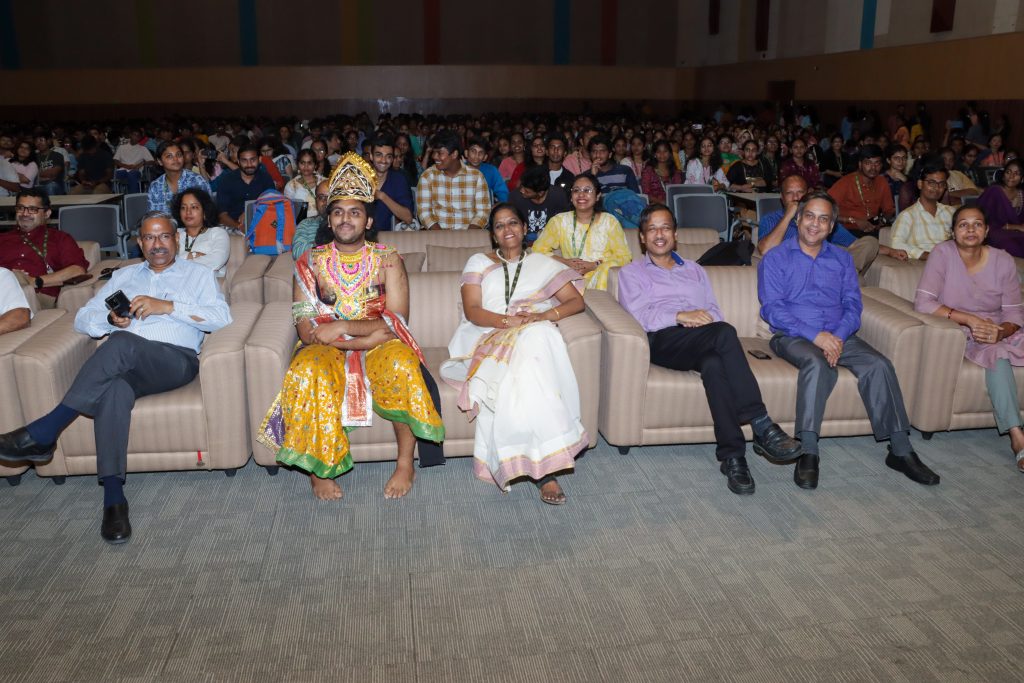 SRM University-AP is a home to diverse group of students coming from different parts of the country and the world, who speak different languages, follow different religions and have different beliefs; the university is a melting pot of cultures and together the varsity weaves a wonderful tapestry. As part of this wonderful diversity, SRM University-AP makes it a point to celebrate festivals and honour the culture of every community and state. The Onam Celebration, Aaravam on campus saw the students join hands to put forth a beautiful spectacle in the form of traditional dances like Thiruvathira Kali and Bharatanatyam and a wonderful amalgamation of Indo-western dance and music performance.
SRM University-AP is a home to diverse group of students coming from different parts of the country and the world, who speak different languages, follow different religions and have different beliefs; the university is a melting pot of cultures and together the varsity weaves a wonderful tapestry. As part of this wonderful diversity, SRM University-AP makes it a point to celebrate festivals and honour the culture of every community and state. The Onam Celebration, Aaravam on campus saw the students join hands to put forth a beautiful spectacle in the form of traditional dances like Thiruvathira Kali and Bharatanatyam and a wonderful amalgamation of Indo-western dance and music performance.The celebration of Onam, a harvest festival of the southern state of Kerala is made in remembrance of King Mahabali’s reign which was believed to be equivalent to the Ramrajya. King Bali’s reign oversaw no discrimination or ill-treatment of his subjects, people lived in perfect harmony and prosperity. Onam is celebrated in remembrance of this golden era.
The vibrant festivities witnessed the participation of Registrar, Dr R Premkumar, Deans of all schools, Directors, Faculty, Staff, and students of SRM University-AP.
Continue reading → - Teacher-Student Duo Author a Chapter on Graph Neural Networks August 28, 2023
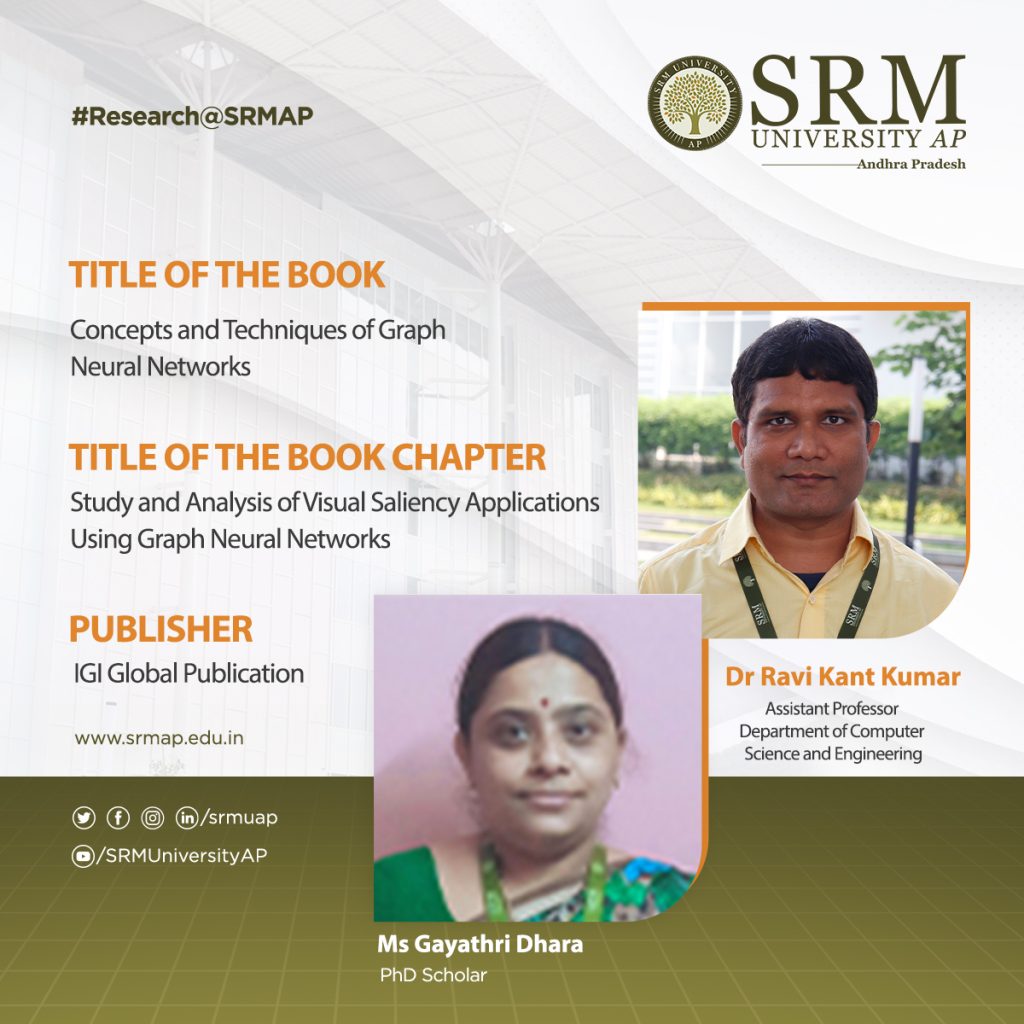
Dr Ravi Kant Kumar, Assistant Professor at the Department of Computer Science and Engineering at SRM University-AP and his research scholar, Ms Gayathri Dhara have recently made a significant contribution to the field of Graph Neural Networks. The teacher-student duo have offered relevant analysis of visual saliency applications using Graph Neural Networks (GNN) in their book chapter titled “Study and Analysis of Visual Saliency Applications Using Graph Neural Networks” in the book, Concepts and Techniques of Graph Neural Networks. The topic of their study will prove to be a key source of reference for industry professionals, researchers, scholars, academicians, practitioners, instructors, and students.
Description and Significance of the Chapter
The chapter covers the practical applications of GNN in the field of visual saliency. Various applications of computer vision problems implemented using graph neural networks (GNNs) have been studied and analysed in this chapter. It also includes the design approach of GNN, the various computational models used in GNN, its challenges and recommendations. The social significance of GNN in visual saliency extends to various domains like Human attention modelling, Advertising and marketing, Visual content understanding, and so on.
Significance of GNNs
Graph Neural Networks (GNNs) have gained significance in the field of visual saliency due to their ability to model complex relationships and dependencies within visual data. Visual saliency refers to the process of predicting the most visually prominent regions or areas in an image or video that attract human attention. It plays a crucial role in various computer vision applications, such as image understanding, object recognition, and scene understanding. GNNs can learn spatial dependencies and feature representations from visual data. There are many methodologies that address the detection of the salient object using GNN. GNNs can handle multi-modal data, combining visual information with other modalities such as textual or semantic features. This integration allows GNNs to leverage additional cues and contextual information to improve visual saliency prediction. So, studying these different salient object detection methods using GNN and knowing the challenges of GNN will help in meeting our research objectives.
Continue reading → - Fostering Global Perspective in Education August 28, 2023
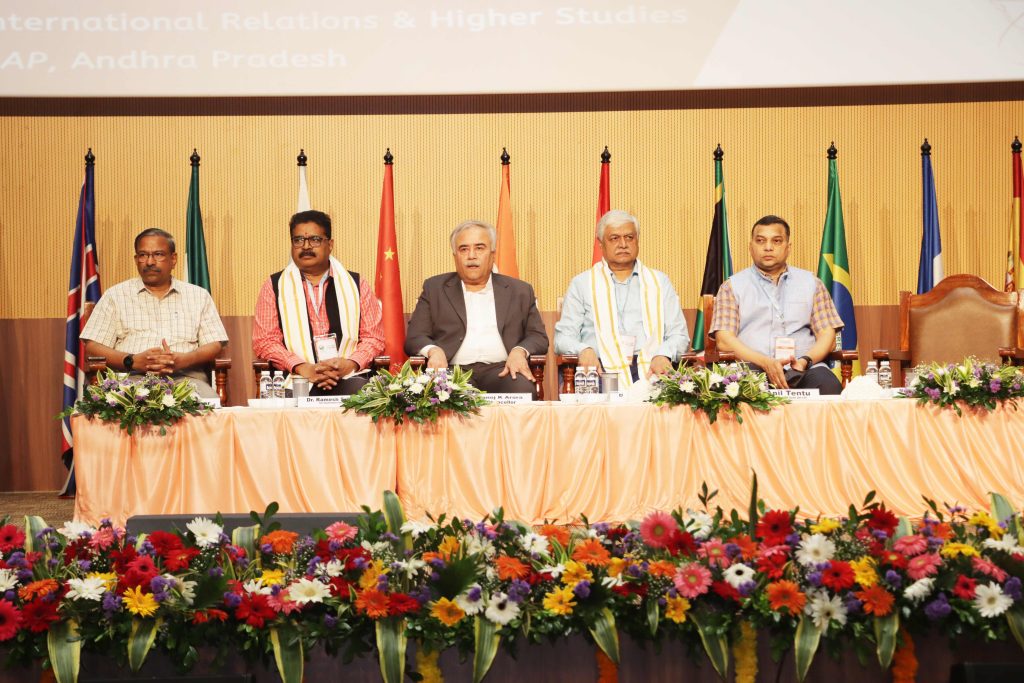
As part of its initiative to whittle the future of education, The Directorate of International Relations and Higher Studies under the aegis of SRM University-AP has organised a Global Principal Conclave that saw the participation of 50+ Educational Leaders from across 15+ countries. Throughout the conclave, the educational leaders were seen exchanging thought-provoking discussions, and innovative teaching approaches in order to foster a global perspective on teaching and learning.
Distinguished guests, including Dr Mukesh Tripathi, Director of AIIMS Mangalgiri, who served as the Chief Guest, and Dr Ramesh Srikonda, Director of Planning and Architecture, Vijayawada, along with Mr Anil Tentu, CEO of AP Innovation Society, Govt. of Andhra Pradesh, as Guests of Honour, joined delegates from around the world to discuss the importance of the event and praised the university’s initiative in hosting the conclave.
The Conclave also witnessed the historic moment where institutes of excellence like AIIMS, Mangalagiri and SRM University-AP signed an MoU. This new collaboration between the two institutions will prove to be a noteworthy milestone in advancing medical research, education and healthcare in the region. “Although we have been working together, this MoU will further enhance the inter-disciplinary collaboration among the institutions,” said Mr Mukesh Tripathi in his address. In his speech to the delegates, Prof. Manoj K Arora said, “Our objective is to be globally connected, nationally relevant and regionally transformative.”
The conclave also saw multiple panels that deliberated on issues such as holistic development, assessment systems and how they impact the education system, intercultural system of learning and harmony in the realm of education. The panellists who spoke on holistic approaches to measuring educational excellence collectively agreed on the scarcity of teachers who join the profession as a choice. The session also deliberated on the system of assessments in education where, Mr C A Govindrao Naik, CEO & Managing Director, JSS Private School, Dubai opined that “not everything important is measurable and also not everything that is measured is important.”
The Global Conclave ended with a cultural performance by students of SRM University-AP with closing remarks by Dr Swetha Pasupuleti, Director of International Relations and Higher Studies SRM University-AP.
Continue reading →